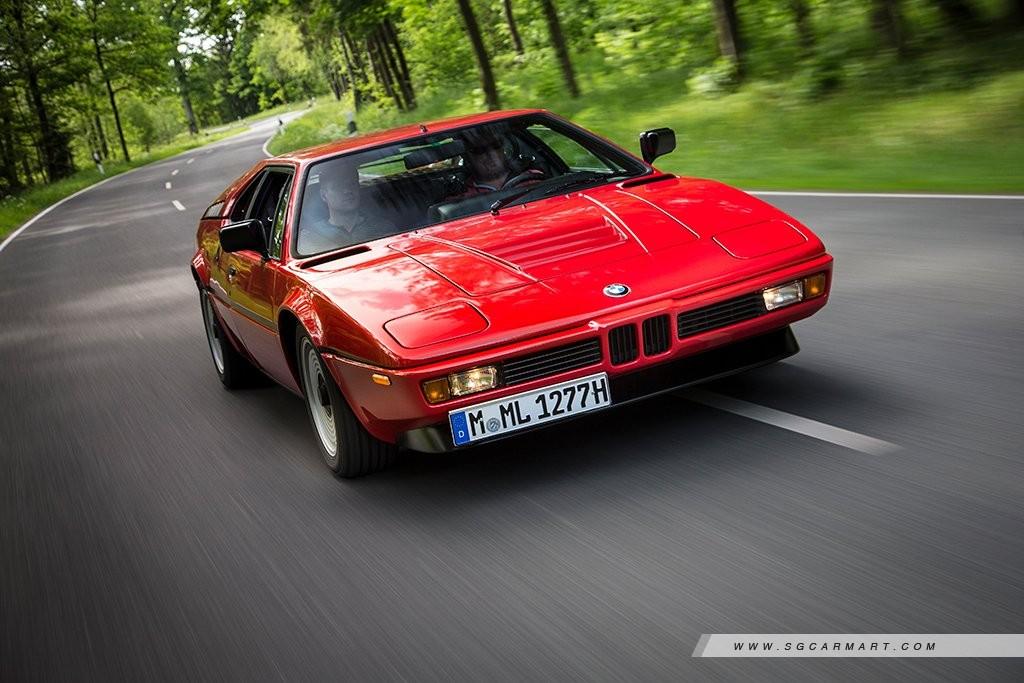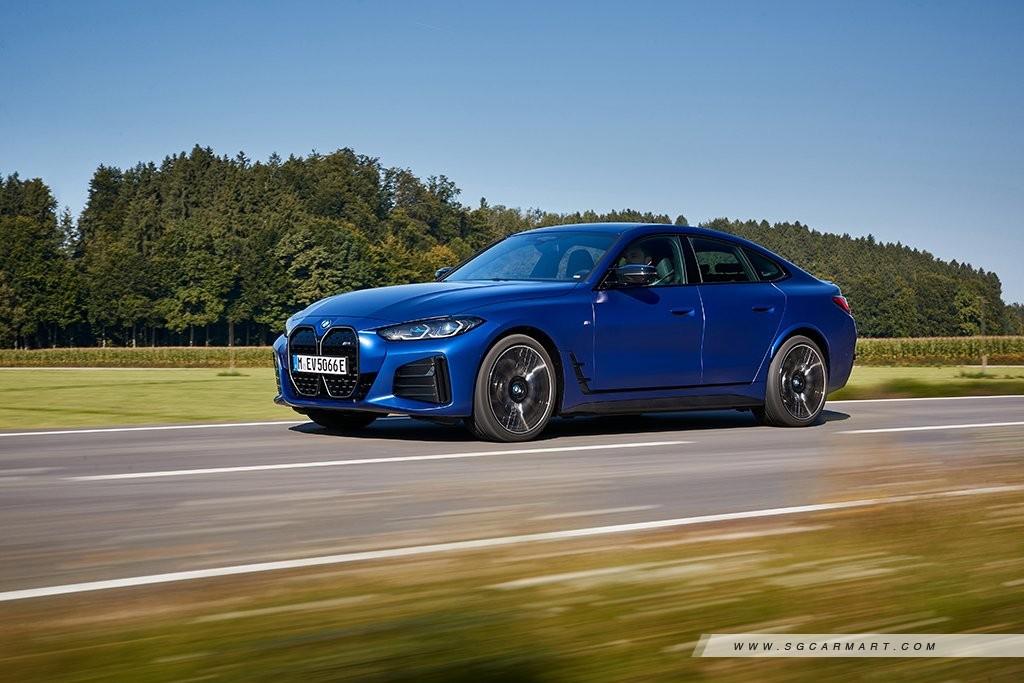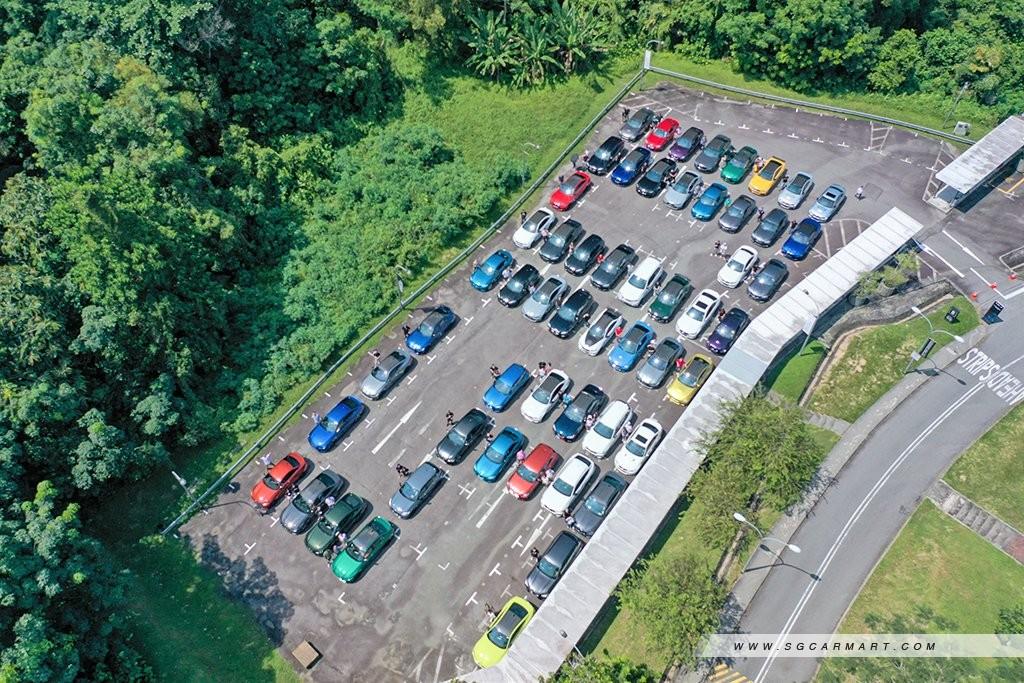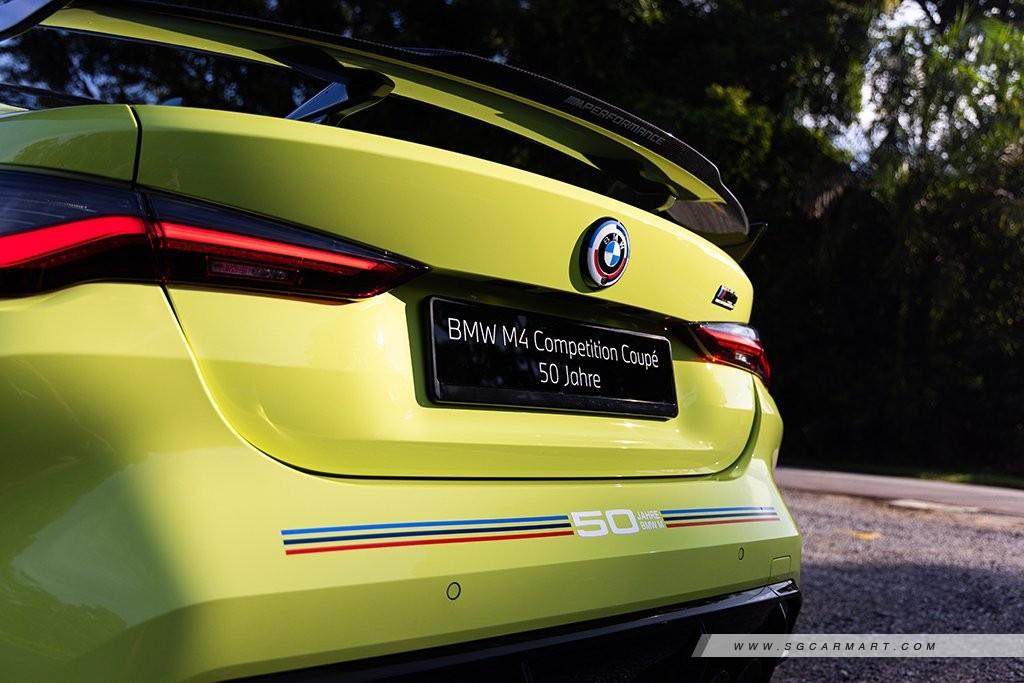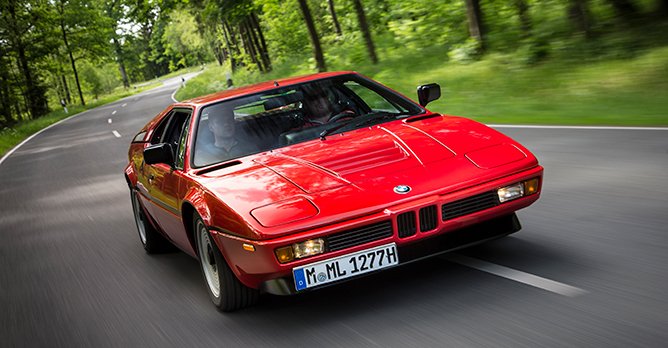The BMW M story, 50 years on
31 May 2022|1,844 views
As BMW M celebrates its 50th anniversary this year, here's a look at how the brand has grown over time and ponder what's still to come in the future.
Motorsport
Like most of the high-performance divisions from other automakers, the genesis of the BMW M brand came, unsurprisingly, from motorsport. In fact, the brand was initially 'BMW Motorsport GmbH', with the name changed to 'BMW M GmbH' in 1993.
To facilitate the brand's racing endeavours, homologation specials needed to be built, the first of which was the BMW 3.0 CSL. This was followed by the BMW 530 MLE, a car built specifically for the South African market so that BMW could race there.
The first proper road-going M-badged car, though, would be the BMW M1, of which only 456 were produced. With its supercar design and mid-engine setup, this was a race car for the roads. It also subsequently spawned the BMW M1 Procar, which went on to compete in a number of race series.
BMW M as we know it
However, for most people, the BMW M recipe is taking a standard production series model and ramping up the performance and excitement. The first car that embraced that ethos was the BMW M535i launched in 1979 (the predecessor to the first M5). Based on the first-generation BMW 5 Series, it incorporated, among other things, a 3.5-litre engine, Recaro sports seats, a dogleg close-ratio transmission, and a limited slip differential.
And that is where the BMW M brand really takes off. Over the years, the brand introduced a range of BMW M models that would become household names, chief of which are the BMW M3 (first launched in 1986 with the E30 M3) and the BMW M5 (first launched in 1984 with the E28 M5).
And while the BMW M brand continues to be celebrated for its super saloons, we have seen the M badge find its way to even more models within BMW's core model line-up. In 2009, the brand launched the BMW X5 M - on top of being an SUV, it also marked the debut of the xDrive all-wheel drive system in an M car.
And in 2011, the BMW 1M Coupe marked the first compact M car. That would eventually evolve into the BMW M2 Coupe, a car that is still widely lauded even today.
Now, we have M-badged models that effectively span the entire BMW line-up. The M2, M3, M4, M5, M6 and M8, M SUV models including the X3 M, X4 M, X5 M and X6 M, as well as the Z model line as well with the introduction of the M Coupe and M Roadster in the Z3 line.
But, the BMW M brand has continued to grow further. You can now find M Performance models in just about every model line in BMW's line-up. These cars, while perhaps not the full-blown M experience, serve as a bridge between the core models and the top-tier M cars.
Pushing further on

 Understandably, electrification is very much on the cards for the BMW M brand, with the i4 M50 being the first all electric M model As the automotive industry shifts towards electrification, it's no surprise that the M badge can now be found on an EV as well. The BMW i4 M50 is the first fully electric model to wear the M badge (and it's going to be launched in Singapore soon), and this is the first in what is likely a growing number of electric M models as well. The BMW iX M60 had its global unveiling recently - the brand's most powerful electric car to date.
Understandably, electrification is very much on the cards for the BMW M brand, with the i4 M50 being the first all electric M model As the automotive industry shifts towards electrification, it's no surprise that the M badge can now be found on an EV as well. The BMW i4 M50 is the first fully electric model to wear the M badge (and it's going to be launched in Singapore soon), and this is the first in what is likely a growing number of electric M models as well. The BMW iX M60 had its global unveiling recently - the brand's most powerful electric car to date.
So what’s next for the BMW M brand? Well, electrification will likely play a big part. The next big model to be introduced globally will be the BMW XM, the first fully bespoke M model since the M1. It will feature a newly developed M Hybrid drive system, which pairs a twin-turbo V8 with a plug-in hybrid system to produce a whopping 740bhp and peak torque of 1,000Nm.
Over the past half a century, the BMW M brand has certainly evolved - transitioning from its racing roots into a more street-oriented performance brand. And as we look ahead to the next 50 years, it's only fair to expect the brand to continue to grow and change in tandem with the automotive industry.
But one thing is for sure - BMW M cars will continue to deliver excitement, intensity and driving excellence.
BMW is offering 50 Singapore-exclusive 50 Jahre models that come with exclusive M Performance parts and classic BMW Motorsport badges. Click here to register your interest now!
Motorsport
Like most of the high-performance divisions from other automakers, the genesis of the BMW M brand came, unsurprisingly, from motorsport. In fact, the brand was initially 'BMW Motorsport GmbH', with the name changed to 'BMW M GmbH' in 1993.
To facilitate the brand's racing endeavours, homologation specials needed to be built, the first of which was the BMW 3.0 CSL. This was followed by the BMW 530 MLE, a car built specifically for the South African market so that BMW could race there.
The first proper road-going M-badged car, though, would be the BMW M1, of which only 456 were produced. With its supercar design and mid-engine setup, this was a race car for the roads. It also subsequently spawned the BMW M1 Procar, which went on to compete in a number of race series.
BMW M as we know it
However, for most people, the BMW M recipe is taking a standard production series model and ramping up the performance and excitement. The first car that embraced that ethos was the BMW M535i launched in 1979 (the predecessor to the first M5). Based on the first-generation BMW 5 Series, it incorporated, among other things, a 3.5-litre engine, Recaro sports seats, a dogleg close-ratio transmission, and a limited slip differential.
And that is where the BMW M brand really takes off. Over the years, the brand introduced a range of BMW M models that would become household names, chief of which are the BMW M3 (first launched in 1986 with the E30 M3) and the BMW M5 (first launched in 1984 with the E28 M5).
And while the BMW M brand continues to be celebrated for its super saloons, we have seen the M badge find its way to even more models within BMW's core model line-up. In 2009, the brand launched the BMW X5 M - on top of being an SUV, it also marked the debut of the xDrive all-wheel drive system in an M car.
And in 2011, the BMW 1M Coupe marked the first compact M car. That would eventually evolve into the BMW M2 Coupe, a car that is still widely lauded even today.
Now, we have M-badged models that effectively span the entire BMW line-up. The M2, M3, M4, M5, M6 and M8, M SUV models including the X3 M, X4 M, X5 M and X6 M, as well as the Z model line as well with the introduction of the M Coupe and M Roadster in the Z3 line.
But, the BMW M brand has continued to grow further. You can now find M Performance models in just about every model line in BMW's line-up. These cars, while perhaps not the full-blown M experience, serve as a bridge between the core models and the top-tier M cars.
Pushing further on

So what’s next for the BMW M brand? Well, electrification will likely play a big part. The next big model to be introduced globally will be the BMW XM, the first fully bespoke M model since the M1. It will feature a newly developed M Hybrid drive system, which pairs a twin-turbo V8 with a plug-in hybrid system to produce a whopping 740bhp and peak torque of 1,000Nm.
Over the past half a century, the BMW M brand has certainly evolved - transitioning from its racing roots into a more street-oriented performance brand. And as we look ahead to the next 50 years, it's only fair to expect the brand to continue to grow and change in tandem with the automotive industry.
But one thing is for sure - BMW M cars will continue to deliver excitement, intensity and driving excellence.
BMW is offering 50 Singapore-exclusive 50 Jahre models that come with exclusive M Performance parts and classic BMW Motorsport badges. Click here to register your interest now!
As BMW M celebrates its 50th anniversary this year, here's a look at how the brand has grown over time and ponder what's still to come in the future.
Motorsport
Like most of the high-performance divisions from other automakers, the genesis of the BMW M brand came, unsurprisingly, from motorsport. In fact, the brand was initially 'BMW Motorsport GmbH', with the name changed to 'BMW M GmbH' in 1993.
To facilitate the brand's racing endeavours, homologation specials needed to be built, the first of which was the BMW 3.0 CSL. This was followed by the BMW 530 MLE, a car built specifically for the South African market so that BMW could race there.
The first proper road-going M-badged car, though, would be the BMW M1, of which only 456 were produced. With its supercar design and mid-engine setup, this was a race car for the roads. It also subsequently spawned the BMW M1 Procar, which went on to compete in a number of race series.
BMW M as we know it
However, for most people, the BMW M recipe is taking a standard production series model and ramping up the performance and excitement. The first car that embraced that ethos was the BMW M535i launched in 1979 (the predecessor to the first M5). Based on the first-generation BMW 5 Series, it incorporated, among other things, a 3.5-litre engine, Recaro sports seats, a dogleg close-ratio transmission, and a limited slip differential.
And that is where the BMW M brand really takes off. Over the years, the brand introduced a range of BMW M models that would become household names, chief of which are the BMW M3 (first launched in 1986 with the E30 M3) and the BMW M5 (first launched in 1984 with the E28 M5).
And while the BMW M brand continues to be celebrated for its super saloons, we have seen the M badge find its way to even more models within BMW's core model line-up. In 2009, the brand launched the BMW X5 M - on top of being an SUV, it also marked the debut of the xDrive all-wheel drive system in an M car.
And in 2011, the BMW 1M Coupe marked the first compact M car. That would eventually evolve into the BMW M2 Coupe, a car that is still widely lauded even today.
Now, we have M-badged models that effectively span the entire BMW line-up. The M2, M3, M4, M5, M6 and M8, M SUV models including the X3 M, X4 M, X5 M and X6 M, as well as the Z model line as well with the introduction of the M Coupe and M Roadster in the Z3 line.
But, the BMW M brand has continued to grow further. You can now find M Performance models in just about every model line in BMW's line-up. These cars, while perhaps not the full-blown M experience, serve as a bridge between the core models and the top-tier M cars.
Pushing further on

 Understandably, electrification is very much on the cards for the BMW M brand, with the i4 M50 being the first all electric M model As the automotive industry shifts towards electrification, it's no surprise that the M badge can now be found on an EV as well. The BMW i4 M50 is the first fully electric model to wear the M badge (and it's going to be launched in Singapore soon), and this is the first in what is likely a growing number of electric M models as well. The BMW iX M60 had its global unveiling recently - the brand's most powerful electric car to date.
Understandably, electrification is very much on the cards for the BMW M brand, with the i4 M50 being the first all electric M model As the automotive industry shifts towards electrification, it's no surprise that the M badge can now be found on an EV as well. The BMW i4 M50 is the first fully electric model to wear the M badge (and it's going to be launched in Singapore soon), and this is the first in what is likely a growing number of electric M models as well. The BMW iX M60 had its global unveiling recently - the brand's most powerful electric car to date.
So what’s next for the BMW M brand? Well, electrification will likely play a big part. The next big model to be introduced globally will be the BMW XM, the first fully bespoke M model since the M1. It will feature a newly developed M Hybrid drive system, which pairs a twin-turbo V8 with a plug-in hybrid system to produce a whopping 740bhp and peak torque of 1,000Nm.
Over the past half a century, the BMW M brand has certainly evolved - transitioning from its racing roots into a more street-oriented performance brand. And as we look ahead to the next 50 years, it's only fair to expect the brand to continue to grow and change in tandem with the automotive industry.
But one thing is for sure - BMW M cars will continue to deliver excitement, intensity and driving excellence.
BMW is offering 50 Singapore-exclusive 50 Jahre models that come with exclusive M Performance parts and classic BMW Motorsport badges. Click here to register your interest now!
Motorsport
Like most of the high-performance divisions from other automakers, the genesis of the BMW M brand came, unsurprisingly, from motorsport. In fact, the brand was initially 'BMW Motorsport GmbH', with the name changed to 'BMW M GmbH' in 1993.
To facilitate the brand's racing endeavours, homologation specials needed to be built, the first of which was the BMW 3.0 CSL. This was followed by the BMW 530 MLE, a car built specifically for the South African market so that BMW could race there.
The first proper road-going M-badged car, though, would be the BMW M1, of which only 456 were produced. With its supercar design and mid-engine setup, this was a race car for the roads. It also subsequently spawned the BMW M1 Procar, which went on to compete in a number of race series.
BMW M as we know it
However, for most people, the BMW M recipe is taking a standard production series model and ramping up the performance and excitement. The first car that embraced that ethos was the BMW M535i launched in 1979 (the predecessor to the first M5). Based on the first-generation BMW 5 Series, it incorporated, among other things, a 3.5-litre engine, Recaro sports seats, a dogleg close-ratio transmission, and a limited slip differential.
And that is where the BMW M brand really takes off. Over the years, the brand introduced a range of BMW M models that would become household names, chief of which are the BMW M3 (first launched in 1986 with the E30 M3) and the BMW M5 (first launched in 1984 with the E28 M5).
And while the BMW M brand continues to be celebrated for its super saloons, we have seen the M badge find its way to even more models within BMW's core model line-up. In 2009, the brand launched the BMW X5 M - on top of being an SUV, it also marked the debut of the xDrive all-wheel drive system in an M car.
And in 2011, the BMW 1M Coupe marked the first compact M car. That would eventually evolve into the BMW M2 Coupe, a car that is still widely lauded even today.
Now, we have M-badged models that effectively span the entire BMW line-up. The M2, M3, M4, M5, M6 and M8, M SUV models including the X3 M, X4 M, X5 M and X6 M, as well as the Z model line as well with the introduction of the M Coupe and M Roadster in the Z3 line.
But, the BMW M brand has continued to grow further. You can now find M Performance models in just about every model line in BMW's line-up. These cars, while perhaps not the full-blown M experience, serve as a bridge between the core models and the top-tier M cars.
Pushing further on

So what’s next for the BMW M brand? Well, electrification will likely play a big part. The next big model to be introduced globally will be the BMW XM, the first fully bespoke M model since the M1. It will feature a newly developed M Hybrid drive system, which pairs a twin-turbo V8 with a plug-in hybrid system to produce a whopping 740bhp and peak torque of 1,000Nm.
Over the past half a century, the BMW M brand has certainly evolved - transitioning from its racing roots into a more street-oriented performance brand. And as we look ahead to the next 50 years, it's only fair to expect the brand to continue to grow and change in tandem with the automotive industry.
But one thing is for sure - BMW M cars will continue to deliver excitement, intensity and driving excellence.
BMW is offering 50 Singapore-exclusive 50 Jahre models that come with exclusive M Performance parts and classic BMW Motorsport badges. Click here to register your interest now!
Thank You For Your Subscription.

